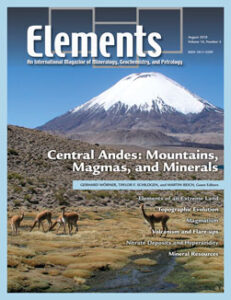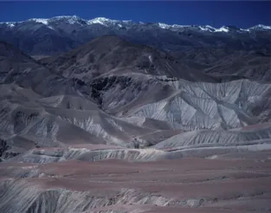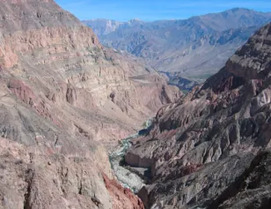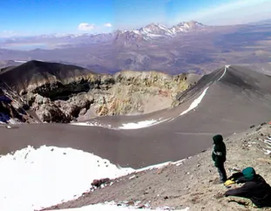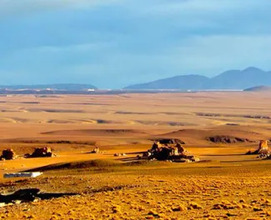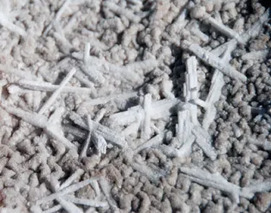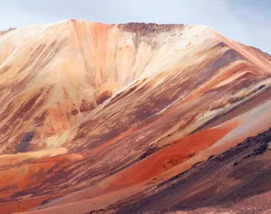Central Andes: Mountains, Magmas, and Minerals
Gerhard Wörner, Taylor F. Schildgen, and Martin Reich – Guest Editors
Table of Contents
The Central Andes in South America are a first-order geological structure on our planet of an active continental margin. The combination of the subduction-related magmatism and processes and the timing of uplift and volcanism shaped the Andean Cordillera. This region provides unique examples of the generation of andesite magma during passage through thickened crust. As one of the largest ignimbrite provinces, the Central Andes also show ignimbrite “flare-ups” that are linked to crustal thickening and increased mantle magma input. Ignimbrites and andesites are the “smoking gun” of crustal differentiation at active continental margins. The interplay between tectonics and magmatism produced the world’s largest porphyry copper deposits. The extremely arid climate conditions of the Atacama Desert led to spectacular salt deposits including the world’s richest deposits of lithium, boron, iodine and nitrates.
- The Central Andes: Elements of an Extreme Land
- The Topographic Evolution of the Central Andes
- Magmatism in the Central Andes
- Turning up the Heat: High-Flux Magmatism in the Central Andes
- Nitrate Deposits of the Atacama Desert: A Marker of Long-Term Hyperaridity
- Ore Deposits of the Central Andes
Volume 14, Number 5 (October) • Deep-Ocean Mineral Deposits
GUEST EDITORS: Paul A.J. Lusty (British Geological Survey, UK) and Bramley J. Murton (National Oceanographic Centre, UK)
Significant deposits of metal-rich minerals are known to exist on the deep-ocean floor, in some instances exceeding global land-based resources. In recent years, advances in understanding and technology coupled with an evolving regulatory regime have resulted in growing interest in mining these deposits. However, assessing the potential and challenges of exploitation is hindered by our relatively poor knowledge of this vast and inaccessible environment. This issue will introduce the reader to the deep-ocean mineral deposits that are attracting most interest, describing genetic models for their formation and future research challenges, including the possible role of microbes in concentrating metals. It will examine the potential for the low-carbon extraction of metals from these novel deposits, and provide readers with a better understanding of the host of environmental, social, economic, political and legal challenges that need to be addressed for the sustainable development of these resources.
- Geological and Economic Significance of Seafloor Mineral Deposits
Paul A.J. Lusty (British Geological Survey, UK) and Bramley J. Murton (National Oceanography Centre, UK) - Modern Seafloor Hydrothermal Systems: New Perspectives on Ancient Ore-Forming Processes
Sven Peterson (GEOMAR Helmholtz Centre for Ocean Research Kiel, Germany), Bramley J. Murton, and Berit Lehrmann (National Oceanography Centre, UK) - Marine Ferromanganese Deposits – Major Resources of High-Technology Elements
Paul A.J. Lusty (British Geological Survey, UK), James R. Hein (United States Geological Survey, USA), and Pierre Josso (British Geological Survey, UK) - Geomicrobiology of Deep-Ocean Mineral Deposits and Low-Carbon Extraction of Metals
Mikhail V. Zubkov (National Oceanography Centre, UK) and Pawel Plucinski (University of Bath, UK) - Mining Deep-Ocean Mineral Deposits and Ecology: What is at Risk?
Daniel O.B. Jones (National Oceanography Centre, UK) and Diva
Amon (University of Hawaii, USA) - Governance of Deep-Ocean Mining
Philomène Verlaan (University of Hawaii, USA) and Michael Lodge (International Seabed Authority, Jamaica)
- Luminescence Dating: Reconstructing Earth’s Recent History (February 2018)
- Comets (April 2018)
- Terroir: Science Related to Grape and Wine Quality (June 2018)
- Central Andes: Mountains, Magmas and Ore Deposits (August 2018)
- Deep Ocean Mineral Deposits (October 2018)
- Marine Biogeochemistry of Trace Elements and Their Isotopes (December 2018)



